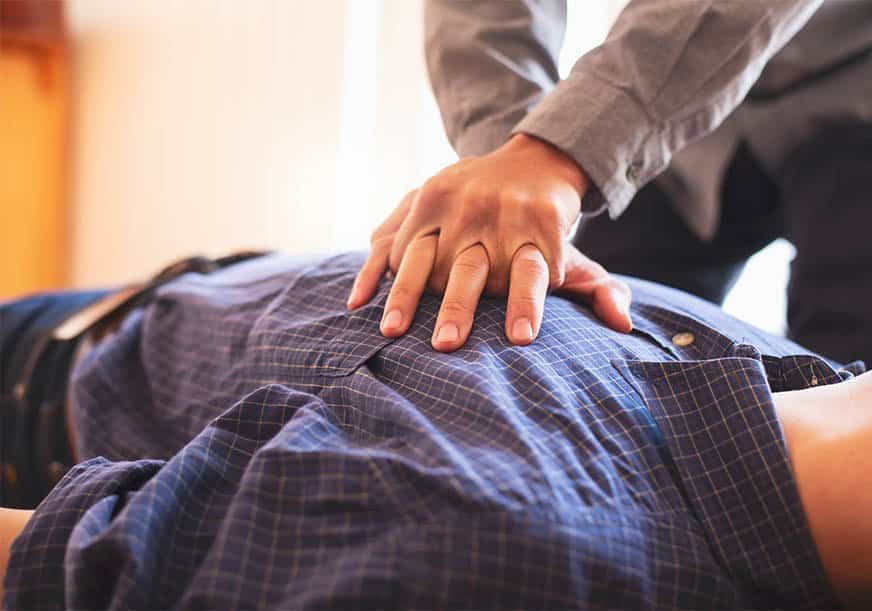CPR can be a valuable life saving tool for adults and children to have a working knowledge of what it is and how to perform the steps. When CPR is administered correctly, it allows time for medical professionals, usually in the form of EMTs to come and assist before transporting to a hospital setting. Our team at Integrity Urgent Care is committed to sharing as much information about CPR to our family, friends, and community as possible.
Procedure
There are several steps in performing CPR. By familiarizing yourself with them, through instruction and videos, you will be more likely to remember them if ever needed.
- Check the scene for safety and ask the individual if they are ok.
- Ask someone for help or call 911 and place your phone nearby on speaker. If there is an AED machine available, access it and follow the audible instructions given.
- Open the airway by laying the individual on their back and gently tilting their head back, tipping their chin up slightly.
- Check for breathing, listening carefully for 10 seconds. If they are not breathing, begin CPR steps.
- Place your hands on top of each other in the middle of the chest and press hard, at least 2 inches deep, at the rate of 100 compressions per minute. Sing the song by the Bee Gees, “Stayin’ Alive,” or have somebody nearby do it, to help you stay on track since the song has at least 100 beats per minute.
- Deliver rescue breaths by pinching the nose and blowing two full breaths into the person’s mouth looking for the chest to rise.
- Repeat until help arrives, switching with someone else if needed.
There are additional tips and tricks available online, including videos from the American Red Cross. There are also different methods to use for children or babies, as well as classes available to become certified in CPR.
Lifeguard Tips
Lifeguard responsibilities, to a large degree, are about preventing accidents before they happen. Whether asking kids to slow down on a slick pool deck or watching for fatigued swimmers, most of what a lifeguard does is looking for dangerous situations. Even at homes with pools, there are simple lifeguarding tips to keep everyone safe. When kids are swimming, designate an adult in shifts to keep an eye on the kids. This should be without distractions and their eyes should always be counting the number of individuals in the pool. Make sure your pool is secure year-round whether you have a fence to surround the pool or closely monitor children who spend time outside. While floatation devices are fun, they should be used in addition to monitoring children who do not know how to swim, not in replacement of that attention. Whenever possible, give your children (and possibly the adults in your life) the opportunity to learn how to swim with a certified swimming instructor. Even young children can learn swimming basics and lifesaving techniques around water. As an added precaution, remember that drowning is usually not splashing and screaming for help, it is often silent and can be deadly.
In Case of Drowning
While prevention is the first step, you should be aware of the next steps in the event you need to help someone who is drowning. When possible, call for help first, whether you are sending someone for help or putting your phone on speaker with emergency services. If the individual is still flailing around, try to reach them with an item to pull them to safety, rather than entering the water yourself. A broomstick, a pool noodle, or a float tied to a string are good options you may have on hand. If there is no movement, you will need to enter the water yourself and carefully move the individual to the side of the pool. If they begin breathing or coughing, help them roll to their side on dry ground or with their head out of the water so their body can get rid of any water they have taken in. If they are not breathing, perform the CPR steps listed above until help arrives. If they begin breathing, roll them over so water can leave their body. You will still want to seek help so they can be evaluated for further damage.
Our team at Integrity Urgent Care want everyone to be safe in and around the water. If you are seeking help for a situation where CPR is needed or a drowning is occurring, directly call 911 for assistance. You can contact us for your day-to-day medical needs or to seek recommendations on where to look for help to learn more.


